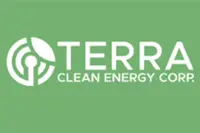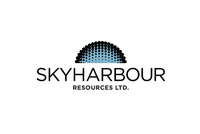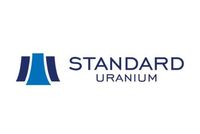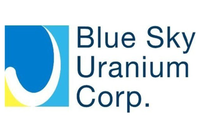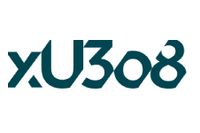
Canada’s Athabasca Basin is famed for its rich uranium resources, making the region a key player in the race for clean energy.
Canada's vast landscape is home to a wealth of minerals that have put it on the map as a global leader in mining, resource development and energy.
While mostly known for its gold, copper, nickel, oil and gas reserves, the country also hosts the third-largest uranium supply in the world, representing roughly 10 percent of global reserves. As the world continues its transition to a future defined by sustainability and clean energy, Canada's uranium mines may prove instrumental.
The country's Athabasca Basin is already a uranium heavyweight, home to the world's top uranium producing mine. In light of increasing demand for alternative energy sources to fossil fuels, the Basin is attracting considerable uranium exploration. Investors would do well to keep the region on their radar and develop a deeper understanding of the current market for the resource.
An impending "supply black hole" in uranium
The uranium market is heating up. For the past year, uranium prices have climbed steadily, driven by the demand for sustainable fuels and the ongoing instability in global oil and gas supply chains.
These factors appear to have put the energy resource on a path with which battery metals investors are all too familiar.
According to Justin Huhn, founder and publisher of Uranium Insider, there simply isn't enough uranium inventory to keep up with demand. Huhn says he expects to see a "supply black hole" in the mid-term, which could have major consequences for both uranium prices and equities moving forward.
"The only (uranium) inventory that exists in the world right now is strategic, held by nation-states and nuclear utilities with limited inventories," Huhn explained in an interview with Investing News Network. "We're at this moment in time where the supply side has gotten so squeezed that very, very low-volume demand in the spot market is moving the price significantly. Best-case scenario — we're talking five years from now and even then it's like a moment-in-time snapshot — supply maybe reaches that structural demand.
"Uranium is a structurally undersupplied market," he added. "Nobody knows where that relief is going to come from."
Uranium prices in Q4 2023 have reached a 15 year high, and the market is experiencing its most favorable supply and demand fundamentals in more than a decade. Consequently, many analysts believe uranium displays all the hallmarks of an early bull market. That's good news for investors — and for any company currently engaged in uranium exploration and development.
A hotbed of uranium mining and exploration
Demand for uranium is potentially even more pronounced in Canada compared to other regions. As a result of a favorable regulatory climate, innovative new technology and multiple utilities with plans to construct their own nuclear facilities, the country appears to be on the verge of what some have called a "nuclear renaissance."
The Athabasca Basin can deliver the stable source of uranium necessary for this, currently accounting for 15.5 percent of total annual uranium production. Spanning roughly 100,000 square kilometers of the Canadian Shield in Northern Alberta and Saskatchewan, the sandstone basin is home to 10 of the 15 highest-grade uranium deposits in the world and hosts the majority of Canada's uranium reserves — an estimated 514,000 metric tons.
The Athabasca Basin region is distinct for its unique geology. The surface of the region consists mostly of sandstone sediment with depths ranging up to 1,000 meters. Uranium is primarily found at the base of this sandstone, deposited between rock layers in geologic formations known as unconformities. The nature of these formations, as well as precisely how they've become so uranium-rich, is a question that's puzzled geologists for decades.
Researchers from the University of Regina recently attempted to answer that question. Their results, however, only raised further questions. Although fluid from ore-bearing areas in the Basin displays high levels of uranium, fluid from areas with no uranium ore shows the same trait.
The conditions under which the Basin's uranium deposits formed thus remain something of a puzzle — though geologist Guoxiang Chi, who is working on the project, suspects the presence of reducing agents, such as graphite or methane gas, to be the culprit. "Without a reducing agent, you can't have ore," Chi explained.
It’s worth noting that several of the most prominent new uranium discoveries have been made just outside the margin of the current sandstone basin in areas thought to have once been covered by the sandstone.
Major players in the Athabasca Basin
Several mining and exploration companies have already staked their claim in the basin. As a result, in addition to major uranium mines, the region is home to plenty of uranium exploration projects, many of which are already in the advanced stage. We've summarized some of the more notable players and their assets below.
North Shore Uranium (TSXV:NSU)
A relative newcomer to Saskatchewan's uranium exploration sector, North Shore currently holds over 60,000 hectares of highly prospective claims along the Athabasca Basin's eastern margin. These claims span two properties, Falcon and West Bear, both of which benefit from pre-existing infrastructure in a region with significant exploration activity.
North Shore is currently in the process of prioritizing uranium targets for drilling set to begin in early 2024.
ATHA Energy (CSE:SASK,OTCQB:SASKF)
ATHA Energy is notable for holding the largest uranium exploration portfolio in the Athabasca Basin, comprising a total of 3.4 million acres. In August, ATHA conducted the largest multiplatform electromagnetic survey in the Basin's history as part of its exploration-at-scale strategy. Initial results have been promising, identifying multiple high-priority areas within the company's East Apex Project.
Cosa Resources (CSE:COSA)
Cosa Resources currently holds more than 140,000 hectares of uranium assets. Proximal to the Athabasca Basin, the projects are either near or within district-scale structural corridors or highly prospective uranium corridors. Most notably, Cosa's 100 percent owned Ursa property encompasses a large portion of the underexplored Cable Bay shear zone. The company's team includes multiple people who were part of the discovery of the Hurricane uranium deposit.
Cameco (TSX:CCO,NYSE:CCJ)
Cameco, one of the world's top uranium mining companies, operates two major uranium mines in the Athabasca Basin, Cigar Lake and McArthur River/Key Lake. The company owns 54.5 percent of Cigar Lake, the highest-grade uranium mine in the world and the world's top producing mine, as well as 70 percent and 83 percent, respectively, of McArthur River and Key Lake, the world's largest high-grade uranium mine and mill.
Other companies with advanced exploration projects in the region include Baselode Energy (TSXV:FIND,OTCQB:BSENF), Fortune Bay (TSXV:FOR) and Okapi Resources (ASX:OKR,OTCQB:OKPRF).
Investor takeaway
Canada has long held a significant position in the global uranium market. Between considerable exploration and development within the Athabasca Basin and the country's plans to embrace nuclear energy, this is unlikely to change. Instead, as more projects come online and more companies claim land within the Basin, Canada will continue to be a major player in the global uranium market — maintaining its standing as a significant source of investment opportunities.
